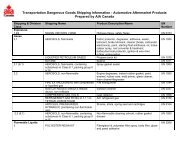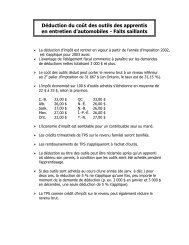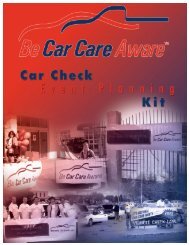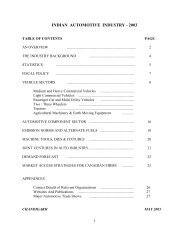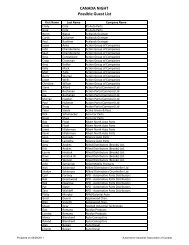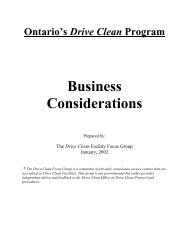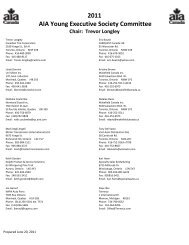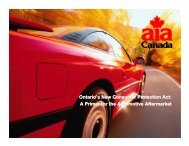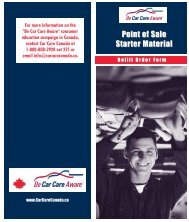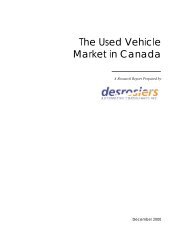Euro 5 Impact Assessment - Automotive Industries Association of ...
Euro 5 Impact Assessment - Automotive Industries Association of ...
Euro 5 Impact Assessment - Automotive Industries Association of ...
Create successful ePaper yourself
Turn your PDF publications into a flip-book with our unique Google optimized e-Paper software.
provisions in the United States. A number <strong>of</strong> stakeholders also requested an update <strong>of</strong> theIn Use Compliance provisions and procedures.Given the approach allowed in existing legislation to demonstrate durability through theuse <strong>of</strong> deterioration factors, the Commission services considers that this requirementplaces very little additional burden on industry from a testing perspective. Requests for thelimit to remain at 80,000 km for this reason have not therefore been considered as valid.The requests from some stakeholders for similar changes in the distance requirements <strong>of</strong>the in use compliance regime would however create much higher cost for industry as thisrequires testing <strong>of</strong> a selection <strong>of</strong> vehicles which have covered the distance specified andhave been maintained in an appropriate manner. Given the difficulty that manufacturersreport having in obtaining suitable vehicles that have reached 100,000 km, it would not beappropriate to change this provision at this stage.The Commission services’s proposal for durability requirements for 160,000 km strikes abalance between the different interests. It provides a signal that it is important for goodemissions performance to be sustained for the whole life <strong>of</strong> a vehicle, rather than for theshorter distances that have existed in legislation up to this point in time. Somestakeholders mentioned that in the future it may be appropriate to move to a system basedmore on in-use compliance (IUC) rather then durability. However, before such a systemcould be considered, it would be necessary to review the effectiveness <strong>of</strong> the IUC systemsthat are in place in Member States. At present, the durability test provides a usefulmechanism for ensuring that emissions performance is sustained over the life <strong>of</strong> thevehicle.With regard to changes to the IUC provisions, there will be scope within the work toupdate the technical Annexes to review whether the procedures in place should bemodified.13. Access to OBD informationSome stakeholders felt that the provisions relating to access to OBD service informationin the draft Directive duplicated those in the Block Exemption Regulation and thus werenot necessary, whilst others considered that the draft was far too weak and needed to besupplemented. In particular, the associations representing repairers argued that theprovisions relating to access to repair information should be made more precise byreferring to the OASIS standard.The Commission services consider that additional action relating to access to OBDinformation is important for the development <strong>of</strong> a competitive automotive industry. The<strong>Euro</strong> 5 Regulation is considered as the appropriate mechanism for ensuring that access toinformation is available. Therefore amendments have been made to the draft Regulation toensure that these issues are adequately addressed.14. Changes to test proceduresIt was highlighted by some stakeholders that the test procedures used to regulateemissions should be updated to better reflect real world driving conditions. Thesuggestion was that air quality had not improved at the rate that would be expected fromthe emission reductions that had occurred in the past, due to limitations in the <strong>Euro</strong>pean40



